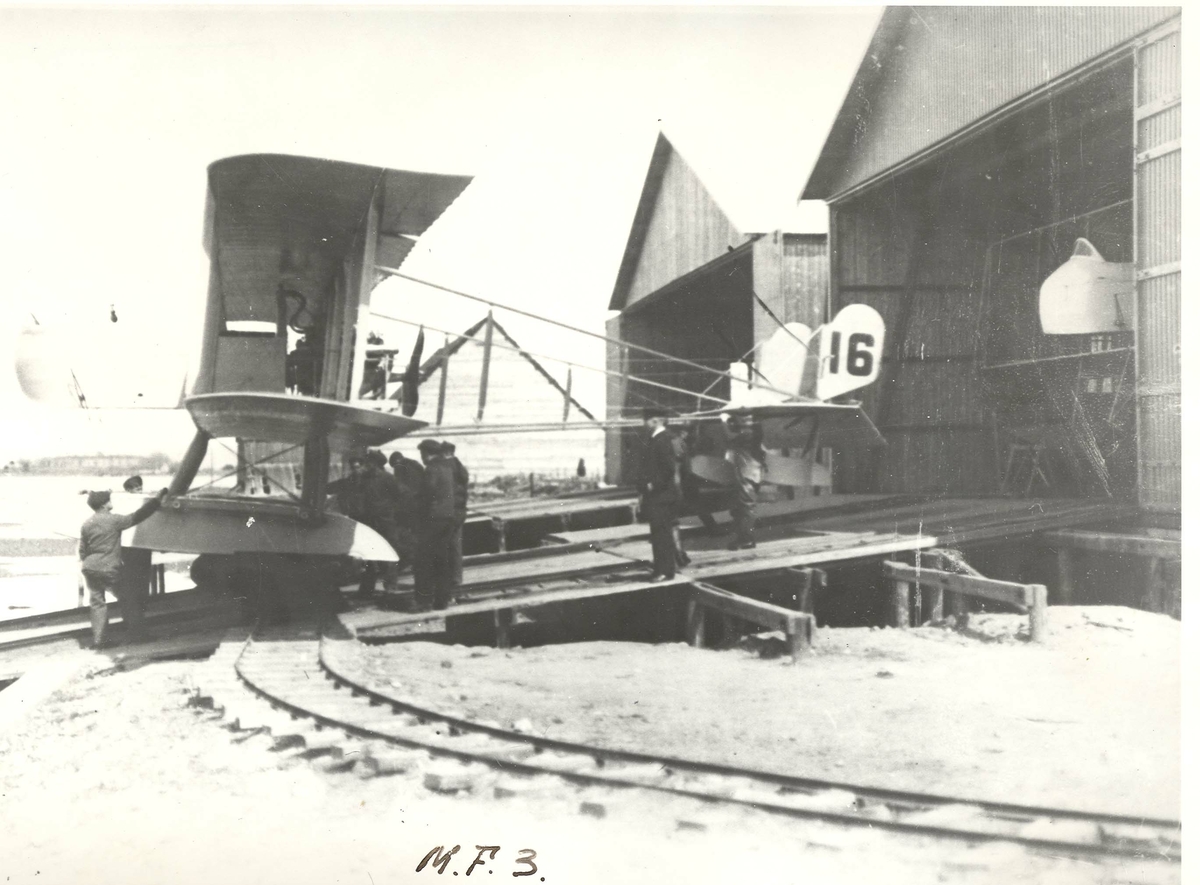
TYPE: Two seat torpedo biplane bomber
AMOUNT BUILT: 4x
BUILDING SITE: Marinens Flyfabrikk, Norway
DESIGNER: Halfdan Gyth Dehl
ARMAMENT
Spoiler
Secondary armament “Primary”
Whitehead Model II 35.6cm x 4.4m.
Whitehead Model III a 35.6cm x 4.4 m
TECHNICAL DATA
Wingspan: 15.6 Meter
Length: 9.7 Meter
Height: 3.335 Meter
Eigne: 1x Curtiss C-6 6-cylinder water-cooled in-line piston engine
Power: 160–180 HP
Propellers: 4-bladed fixed-pitch wooden pusher propeller
Empty weight: 1,150 kg
Gross weight: 1,500 kg
Crew: 2x
PERFORMANCE
Maximum speed: 125 km/h
Cruise speed: 110 km/h
Range: 660 kilometer
Rate of climb: 1.85 m/s
SERIAL NUMBER,TAIL NUMBER, TIME IN SERVICE & FATE
9 – F.14 11.04.1917 - 10.02.1921 - Discarded 1921
HISTORY
The commander of the Norwegian Marine Air Force, Captain Gyth Dehlie wanted to invest in building up and starting an aircraft industry in Horten, Norway. In 1915, he had the plans for this ready, and had made a number of drawings for aircraft, among them drawings for a scout plane. This gave the newly established aircraft factory the task of building two copies, which were then given the designation “M.F.2”, an abbreviation for “Marinens Flyfabrikk”.
It turned out that the gondola on the M.F.2 aircraft became far too cramped for the crew when the armament and radio center were taken on board. Since the budgets for 1917 allowed for the construction of four reconnaissance aircraft, the Flyvebåtfabrikken started planning a new aircraft type “M.F.3” which had a larger nacelle and was somewhat more robust than the M.F.2. The aircraft was powered by an American-built 160 HP Curtiss motor which proved capable of producing a maximum of 180 HP. This meant that both carrying capacity and speed were somewhat better than expected. In the beginning, the four aircraft received the same armament as the M.F.2, but eventually the Madsen machine gun was replaced by a Lewis Machinegun in ring firing. The plane could also carry a 40 kg mine or bomb.
At this time, the Norwegian Navy consisted largely of torpedo boats, and it was decided to test the use of torpedoes on aircraft. If one removed the radio, machine gun and weight of the mine, the aircraft could lift a 320 kilo torpedo. The floats, however, were braced with crossbars, and the torpedo had to be mounted so low that it lay in the water when the aircraft was at sea. The weight and the low center of gravity also made the flying characteristics somewhat worse. The hit percentage was poor, and one concluded that the aircraft was not suitable for this service
The main difference between the Early Service and Late service are that the Madsen Machinegun were removed and replaced by a .303 M/14 Lewis machinegun, in addition to be mounted otherwise, this time on a “ring mount” same way as a turret, just in the front of the plane (the 2nd seat is located in the very front of the nose). Some of these planes were also tested with torpedoes. with the radios, bombs/mines and machinegun removed, the plane were light enough to carry 1x of the Norwegian type 2 & type 3 350mm torpedo with a weight of 320 Kilogram.
IN GAME
Considering it has everything removed, even the machinegun so it only has the option to carry 1x torpedo, i am not sure how it would be added. potentially as a plane one can bring into naval battles pretty cheap. the torpedo is not the worst, so it could do some damage to certain vessels. Eventually just have it as an modification to the regular late service variant, but i am not so sure how that would work, since the machinegun etc has to be removed.
ILLUSTRATION

ALBUM
Spoiler
SOURCES
Spoiler
https://www.norli.no/boker/dokumentar-og-fakta/historie-og-dokumentar/krig-og-historie/luftforsvarets-historie-fortalt-gjennom-75-gjenstander?
https://www.adlibris.com/no/bok/norske-militarfly-9788271286873?
Norsk marinehistorie : modeller som forteller - detaljert visning - Biblioteksøk
Not the best: Marinens Flyvebaatfabrikk M.F.3 – Wikipedia
Marinens Flyvebaatfabrikk M.F.3 - Wikipedia
- Yes
- No